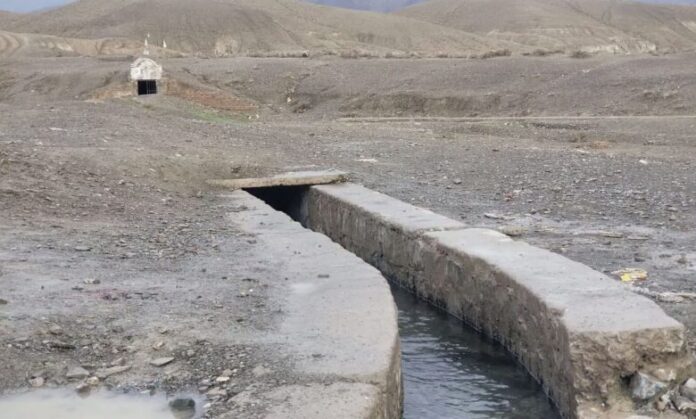
Hazrat Ali Attar
Karez, a gravity-fed irrigation system in the Pashtun belt of Balochistan, is the backbone of the social and economic system of the area.
A survey report suggests, there are around 1150 karezes in Balochistan, but due to a lack of timely planning, dozens of karezes have completely dried up.
The local people say the water level went down to several hundreds of feet in many karezes forcing the residents of most of the districts in the province to migrate therefrom.
However, dams have been built in different districts of the province recently which brings back the hope of securing these precious water resources.
The Dead Karez
The ‘dead’ karez is considered one of the famous and major karezes of the province.
Habibullah Achakzai, a local resident, spoke to TNN about the history of the dead karez, karez system, and water distribution, as well as about the construction of dams.
Habibullah Achakzai said that ‘Murda’ (or the dead) Karez is a big Karez, built 260 years ago and is shared by 30 thousand people.
He said the population of the area depends on agriculture for its livelihood, but earlier people had stopped using the Karez due to the lack of water in the dead Karez every year.
Habib said that around 35 percent of the population migrated to urban areas due to a lack of water because people were forced to buy water there.
He is optimistic that now dams have been constructed, this will have a better effect on the karez system and people are likely to settle there again.
What is a Karez and how does it work?
According to Habibullah Achakzai, Karez is a Pashto word that refers to the system of bringing underground water to the surface of the earth, ‘A Karez is a series of wells connected by a tunnel while the depth of these wells varies from each other.’
He said Karez helps supply water from a higher point to a lower point several kilometers away for irrigation and other purposes without pumping, the underground water remains cool and does not evaporate reducing the possibility of reduction in water storage.
He said that this system is divided between two branches of the Ashizai people living in the area of ‘Murda’ Karez; Jan Nika uses it for six days and then used by Bilal Nika for another six days, on the 13th day the water belongs to Jan Nika’s eldest son Fasaltab Nika, who died during the excavation of this Karez.
It is worth mentioning that after the death of Fasaltab Nika, this karez was named Murda (the dead) karez.
What effect did the construction of the dams have on the Dead Karez?
According to Habibullah, six years ago the water in this reservoir stopped filling up, but after the construction of the dams, there has been a very positive effect on the reservoirs, while the recent monsoon rains improved the accumulation of water in this dam, which now takes 30 minutes filling the lake instead of 90 minutes.
He also complained by saying that the water in their Karez has increased 10 times due to the construction of the dam, ‘If this project had been built 30 or 35 years ago, people might not have been forced to migrate from here.’






